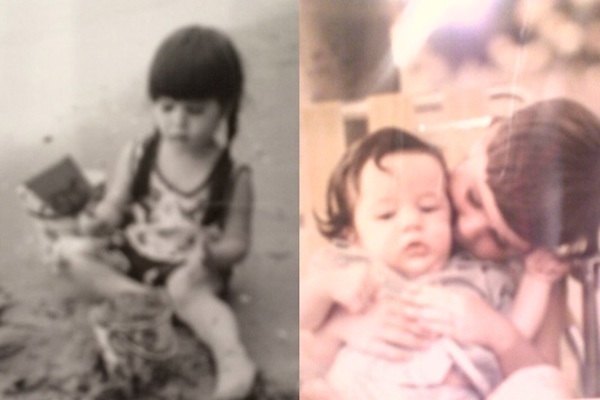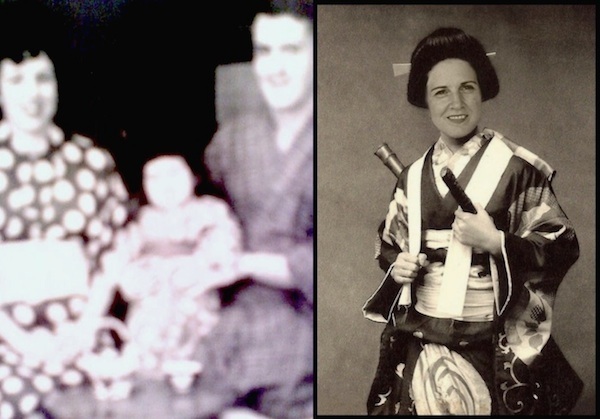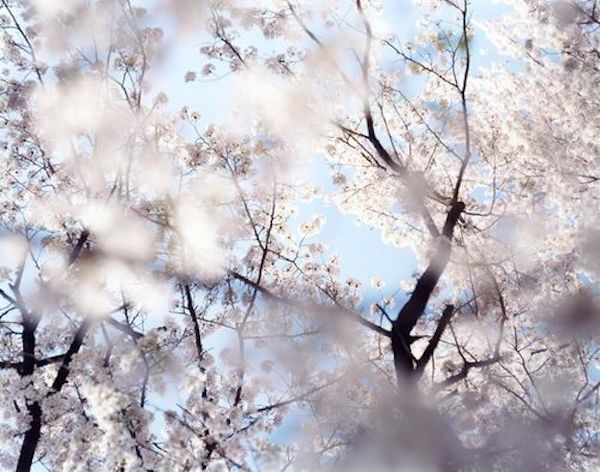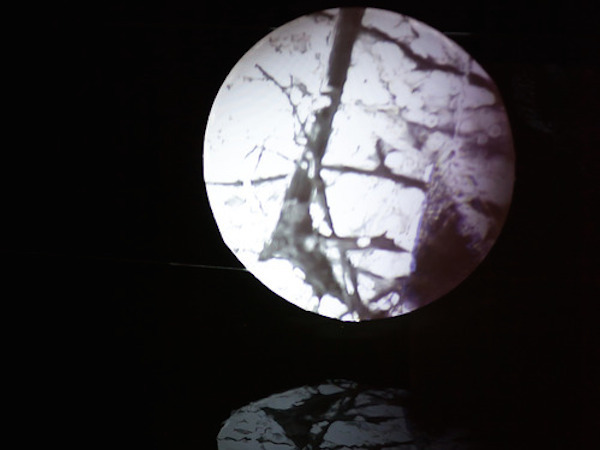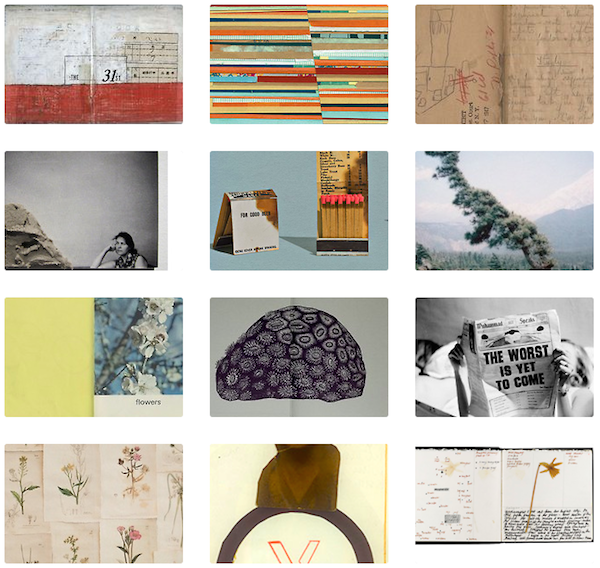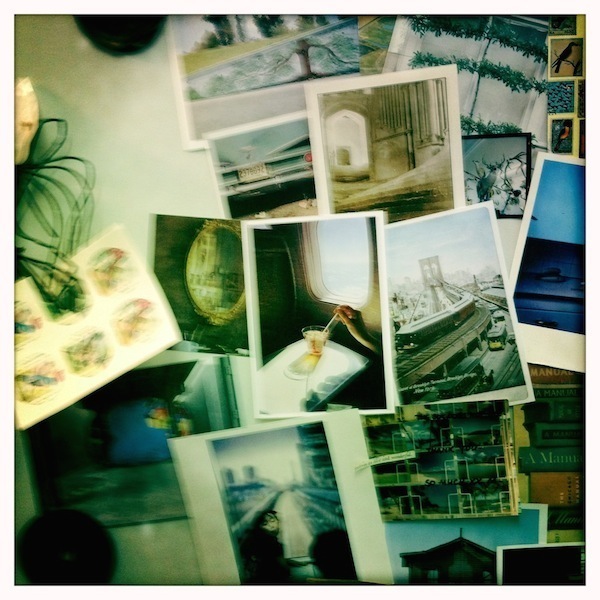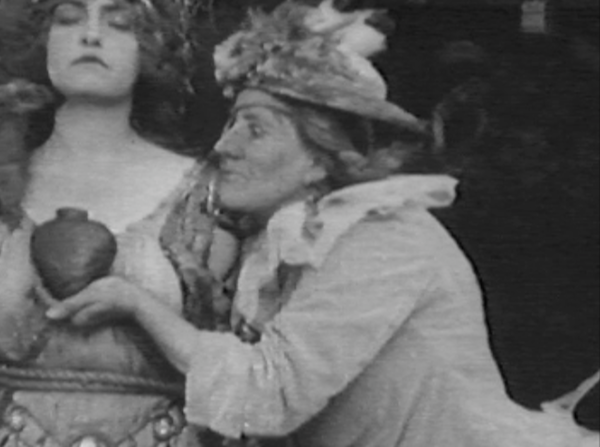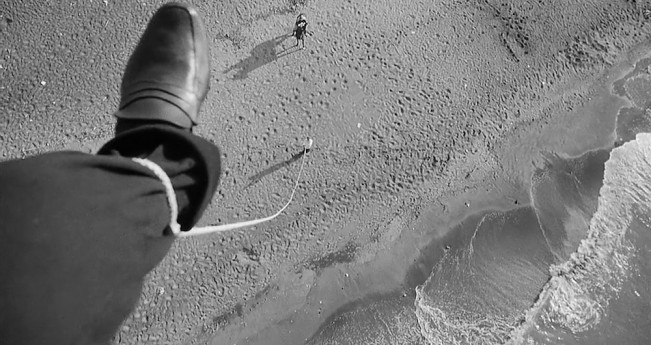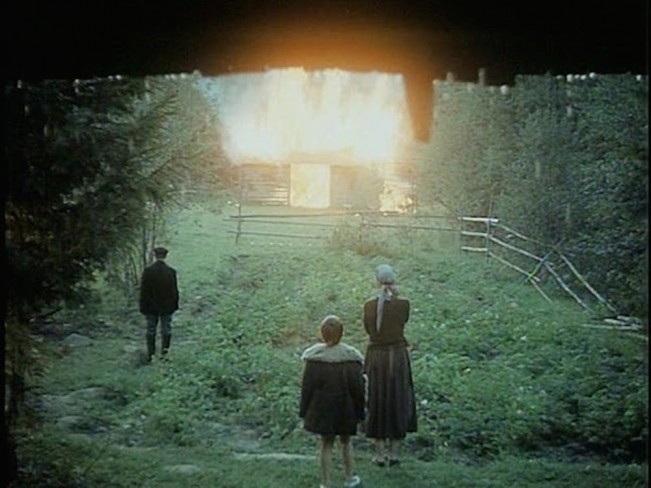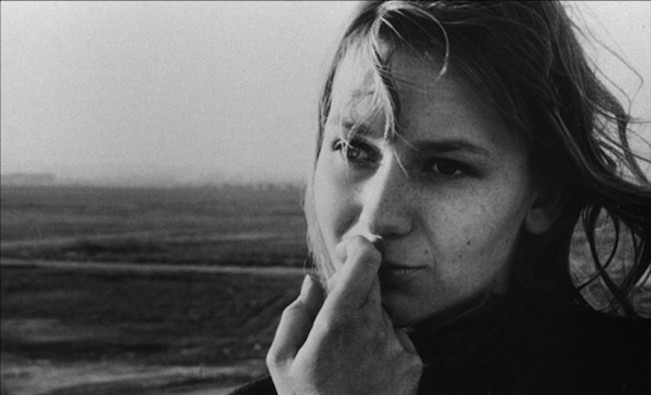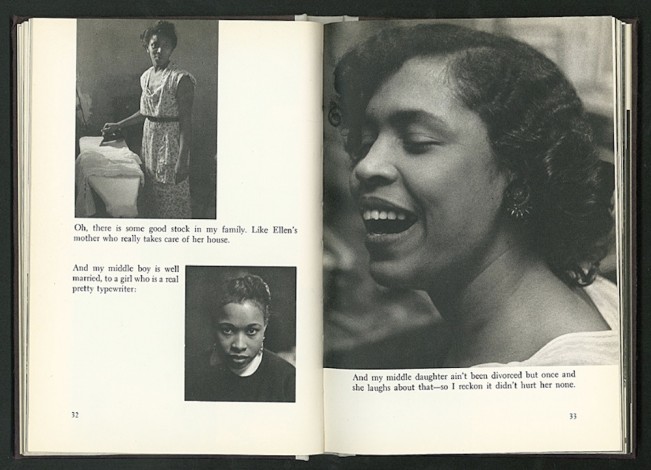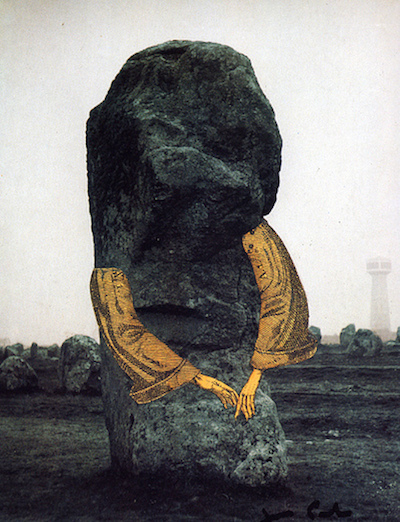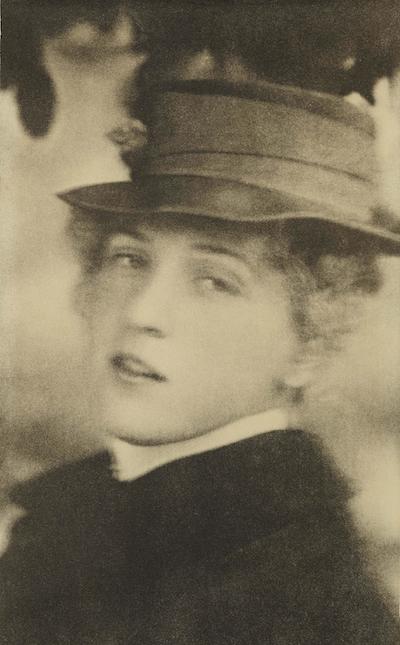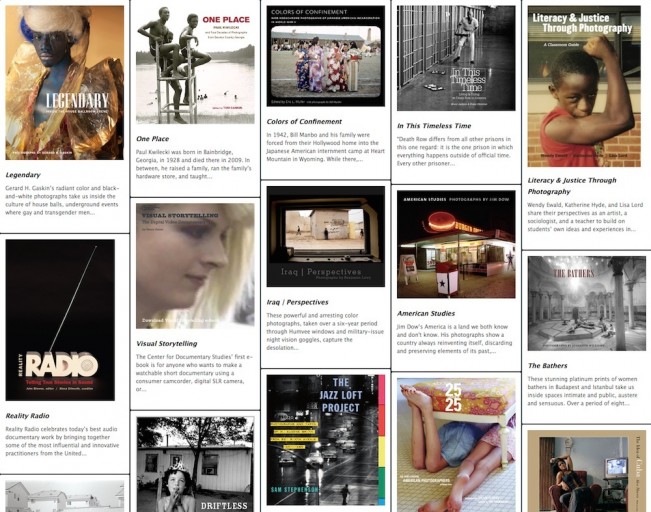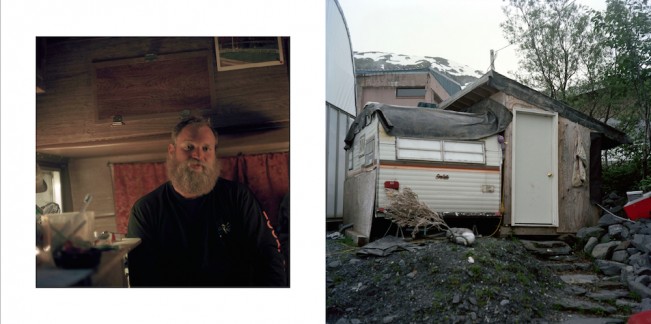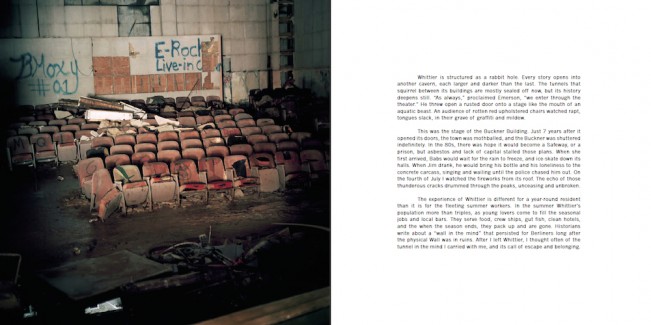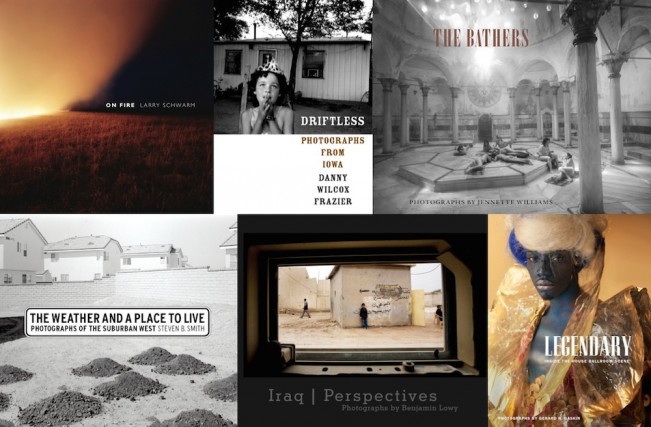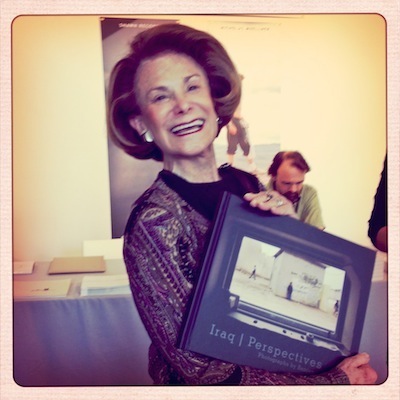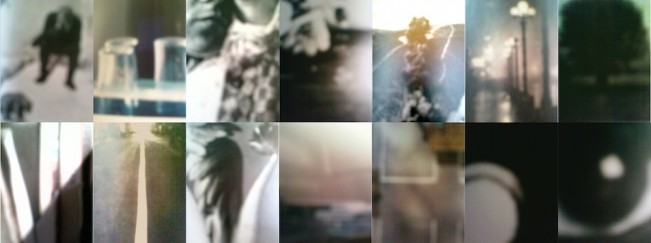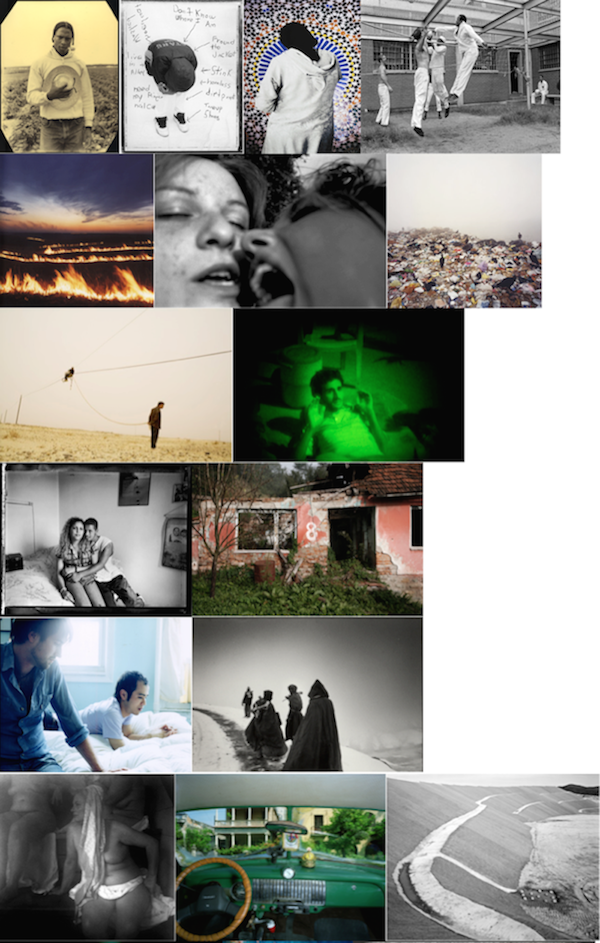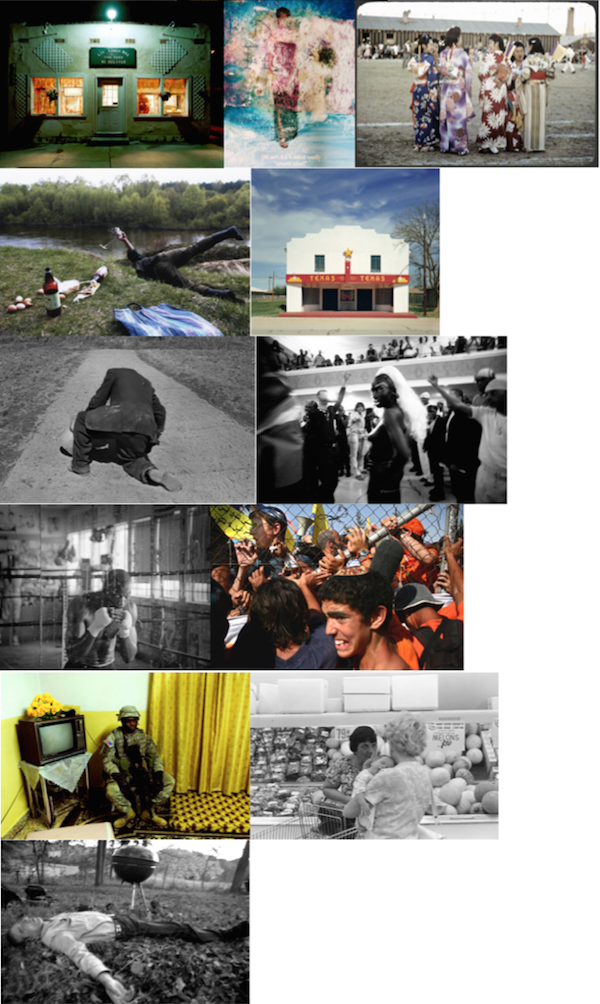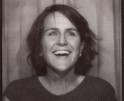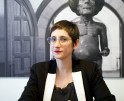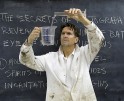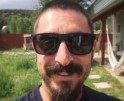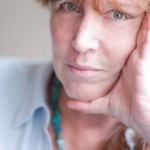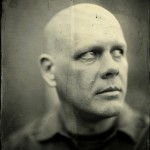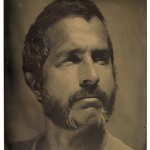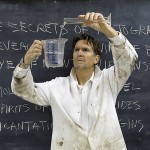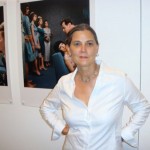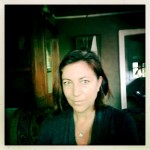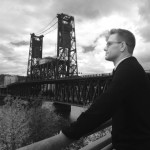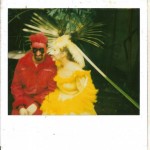The Alexa Dilworth Mixtape
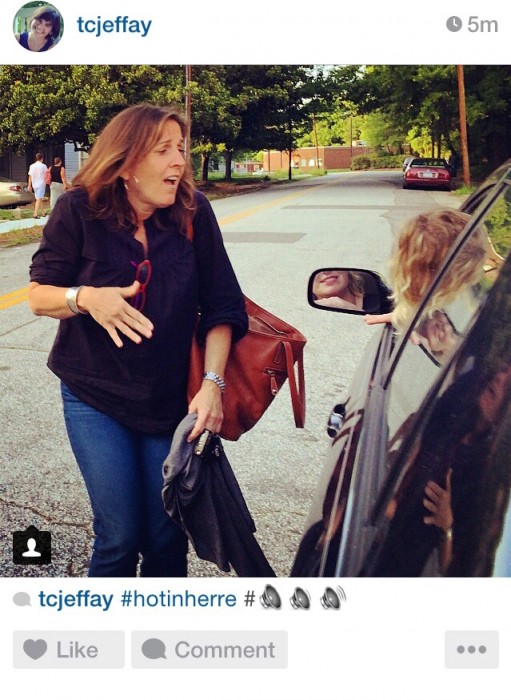
The fabulous Alexa Dilworth at a Friday afternoon dance party in Durham. Nelly on car stereo. “Tory Jeffay, star CDS Intern, who very sadly moved to SF in June, sent me this screen shot of an Instagram post…”
This photograph alone is why I created the Mixtape series. It reveals a woman, full of fun, dancing to Nelly outside of a car on a Friday afternoon, ready to take on the weekend. It happens to be Alexa Dilworth, Publishing and Awards Director/Editor, CDS Books, at the Center for Documentary Studies at Duke University. Alexa holds a rather heady position that considers and celebrates a broad array of documentary work and that celebration often changes careers through exposure, awards, and books. In addition to her day job, Alexa is also a regular juror and reviewer at photo events around the country. It’s that complexity of person (as you will learn after reading this mixtape) that I love sharing on Lenscratch. Alexa and I had the great pleasure of co-jurying the 2014 SlowExposures Competition and in September, we will be attending the the SlowExposures Photography Festival that welcomes visitors from across the United States to experience the rural South through the medium of fine art photography. We are also planning our own photo road trip around the festival, probably with a little Nelly or Drake to carry us along.
I am also calling attention to the CDS/Honickman First Book Prize in Photography. Center for Documentary Studies (CDS) at Duke University and The Honickman Foundation (THF), based in Philadelphia, co-sponsor this prestigious biennial prize. The only prize of its kind, the CDS/Honickman First Book Prize in Photography competition is open to North American photographers of any age who have never published a book-length work and who use their cameras for creative exploration, whether it be of places, people, or communities; of the natural or social world; of beauty at large or the lack of it; of objective or subjective realities. The prize honors work that is visually compelling, that bears witness, and that has an integrity of purpose.
Winners of the CDS/Honickman First Book Prize in Photography receive a grant of $3,000, publication of a book of photography, and inclusion in a website devoted to presenting the work of the prizewinners. The winner will also receive a solo exhibit; the photographs will then be placed in the Archive of Documentary Arts in Duke University’s Rubenstein Library. Submissions are due September 15th.
This is how Alexa describes her decisions when it comes to awards: “Over time, I have developed a sense of how a particular award might benefit a particular photographer—this has happened over and over with the Lange-Taylor Prize or the CDS/Honickman First Book Prize in Photography. Usually, it’s a photographer who is doing work with or without encouragement (payment or otherwise). Whatever the project, this is something they have to photograph, witness, share. Emerging photographers who are finding their voice—that electric pulse point between their ideas, their cameras, and their subjects—are finding that connection. I encourage people to keep doing what they are doing because the work is going to find the right home. To receive an award is meaningful, period. Being handed the message that other people want to enter the frame, the room, of your images with you—it’s powerful.”
And now, it gives me great pleasure to present The Alexa Dilworth Mixtape!
Tell us about your growing up and what brought you to photography.
Almost every element of who I am was defined by the age of 18—and really, more precisely, by the age of 7. Everything that fascinated me as a child still fascinates me. I am a good example of the marriage of nature and nurture, of the environment I grew up in and the histories and personalities of my parents.
I was born in Japan in August 1963, in a village on the western outskirts of Tokyo (now an inner suburb). These are things I’ve been told: My first word was “moon.” I went to cherry blossom festivals and festivals for the dead. I visited monasteries and shrines. I attended the 1964 Tokyo Olympics.
When I was three we moved to the U.S., where I had never visited, and took a trip from Alaska to Florida, weaving back and forth through America and Canada.
My first memory is the full moon rising over the Plains of Abraham in Quebec. When I look through my blog, halfreaction.tumblr.com, my diary of things that I saw and liked seeing, I can’t help but notice that so many of the photos are of circles or contain circles. I guess you can only become acquainted with your own preoccupations over the long haul: reading a stack of the poems you’ve written, in looking at collections of photographs—your own and the ones you’ve gathered around you.
My father was stationed to the Pentagon, as he would be over and over until the time I was 18. We lived in northern Virginia—Arlington and then Springfield. (Of course he didn’t get stationed anywhere exciting until he was remarried and I was in college.) [Sidenote: There was a brief period when I was in the fourth-grade that it looked like my dad might be stationed in Tehran. I prayed to Zeus to be delivered from Virginia. The orders fell through.]
My favorite year of childhood was the year I was seven. We lived in Leavenworth, Kansas, which unlike suburban Virginia, I considered a “real” place. There was an antique store there called Allen’s Bookshop, which is where I discovered, sitting on a crooked staircase crammed with stacks of Nat Geo and odds and ends (railway lanterns, a brass coal hod), like a scene out of a Dickens novel:
poetry, photography, music (scratchy old 78s), the beauty of things that are old and worn, a fascination with the past, and an eerie sense of its immediacy (its actual not-past-ness), Victorian Christmas ornaments, ephemera, maps, science magazines, books, the smell of books.
I also learned what a true indulgence the company of a like-minded person is (Allen of the bookshop, in this case). And I am lucky to have been indulged many times over since then in that same rare way.
I think this is where I also first apprehended my spirit, and knew that I did, not as an idea and feeling (it’s more that way now, sadly) but as a part of my physical being. Objects and their emanations. What’s visible and what isn’t (and yet so real).
The photograph is literally an emanation. . . . From a real body, which was there, proceed radiations which ultimately touch me, who am here; the duration of the transmission is insignificant; the photograph of the missing being, as Sontag says, will touch me like the delayed rays of a star.” ― Roland Barthes, Camera Lucida
What was the first photograph to reach me?
The first poem? The first book? The first song?
This is a selection of emanations and transmissions that have stayed with me, that have traveled with me.
My first loves as far as photography goes were pictures in National Geographic and film stills from silent movies. My parents would sometimes go to the American Film Institute—there was a book in the store there that I had to have, The American Film Heritage: Impressions from the American Film Institute Archives (1972). One image haunted me, still does. A picture of the witch in an early OZ film holding a heart in her hands. When I went to find the image for the Mixtape, I discovered I’d ripped the page out of the book at some point long ago. Where did I put it?
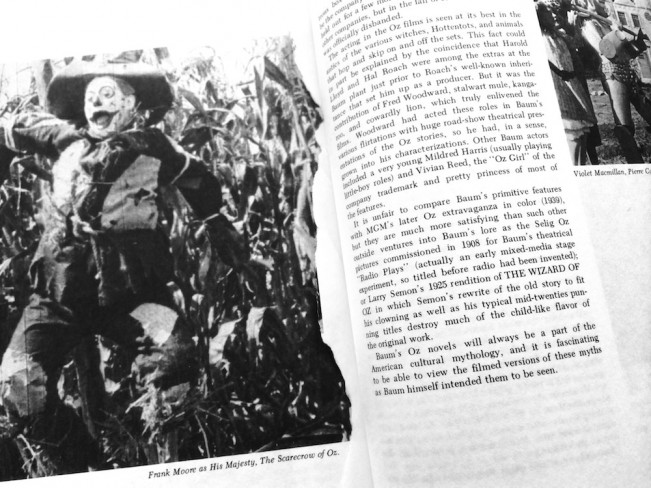
The still looked something like this, but this isn’t it (because the heart in the photo I’ve lost was frozen with icicles at the bottom of it—I think):
Film stills still, yet, preoccupy me. Memories, dreams, mysterious moments. Which is why I think I’m so devoted to the art of still photography. Photographs are stolen seconds from the movies of our collective lives. The subject is always time
Stills from Fellini’s 8 ½, Tarkovsky’s The Mirror, and Marker’s La Jettée
The first book of photographs that I ever bought was The Americans, with my first paycheck when I was 16 years old. But I’d been diving into the history of photography before that and was deeply absorbed in looking at early color photography, conflict and documentary photography, particularly the photos of Stieglitz and Steichen and Atget and Capa and Blossfeldt and Sander.
A little later, maybe the next year, I checked a copy of The Sweet Flypaper of Life out of the library, which showed different kinds of possibilities in creating a “true account” of people and events and helped to cement the relationship of writing and photography in my mind.
Recordings and inventions. Edited words, edited photographs. What remains beyond the boards of the book?
Around the same time that I discovered those two books, I started reading and writing poetry. Which I did almost exclusively, apart from reading books, watching old movies, making collages, and looking at photo and art books, for the next ten years. For me, photography and poetry have always been inextricably linked. They interest me in the same ways—how they refer to but never reveal what’s missing or even what’s being looked for, like a cicada shell. There’s always more to be discovered. (The last single photograph in The Americans, of Mary and Pablo, on U.S. 90, en route to Del Rio, Texas, is one of my touchstones. My brother and I share this photo; we’ve always thought it was about us, that it embodied a certain aspect of our lives and relationship, the uncanny precision and diffuseness of the frame within the frame. Metaphor and memory.) I didn’t start looking at and thinking about more contemporary photography until after college.
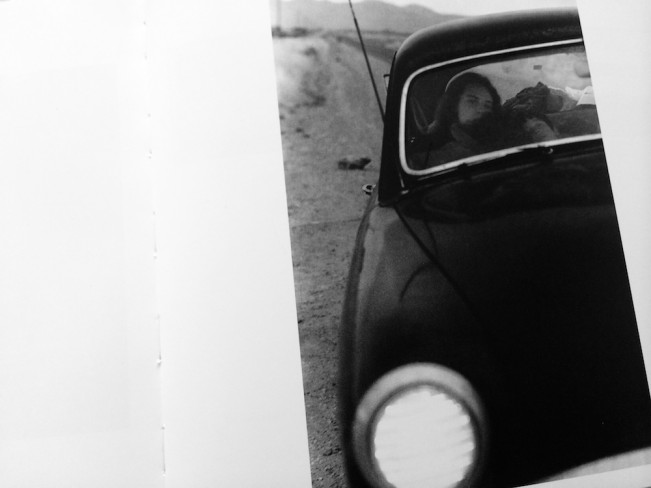
The camera sees differently, more and less, than we do. Romantic and stark by turn.
Photographs and film stills put a frame both around interior understandings, recognitions, correspondences and exterior realities; they fuse with one another and create their own order and logic—poetry works that way too, to be brief and utterly inadequate about it.
[I thought about this photograph for a long time, years.]
Miss S. R. (1904)
—after Alfred Stieglitz
What frightful snows there were
and my hat barely touching
my head—
or so I thought,
reaching to readjust hatpins
with gloved fingers.
Spring came, tremulously,
filling the air about me
with green leaves
and poplar blossoms.
But a winter’s in me yet,
in the slow drowsiness
of my eyes and the frozen words,
no more than thin clouds
in the off-focus blur.
Umbrellas open in my sleep
to ward off the sound
of falling snow
as it fills the towns of my dreams
without longing or wakefulness,
while the small tempers
of languid afternoons
stir the blooms
as they waver past
and collect in drifts.
When I graduated with my MFA degree in poetry, after working at the University of Iowa Press and the Windhover Press both years, and moved to North Carolina, my first jobs were freelance gigs in graphic design and editorial and production work, and then I worked for a book packager in Durham. And then an editorial position came open at the not-very-old Center for Documentary Studies—for a proofreader at their new magazine called DoubleTake.
What is your title and job description and tell us about a typical day?
My title is Publishing and Awards Director/Editor, CDS Books, at the Center for Documentary Studies at Duke University (CDS). There really is no typical day to describe, which I consider a great thing to be able to say. I do everything from soup to nuts: edit manuscripts, sequence photographs, work with a designer and production manager to make books, write marketing copy, collaborate on ads and publicity, write and edit copy for CDS programs and exhibits, administer the biennial CDS/Honickman First Book Prize in Photography competition (accept entries one year, produce the winning book the next) and the annual Lange-Taylor Prize, as well as the CDS Documentary Essay Prizes in Photography and Writing. And I jury or screen for a few competitions and attend portfolio reviews—this year for Critical Mass, the Fence at Photoville (interview), the Aaron Siskind Foundation, SlowExposures (with Aline Smithson), and ICP’s Career Day.
Here’s a few of the books and awards I’ve worked on in the last three or four years—but I’m incredibly proud of all the books, the depth and diversity, we’ve published and prizes we’ve awarded over the years.
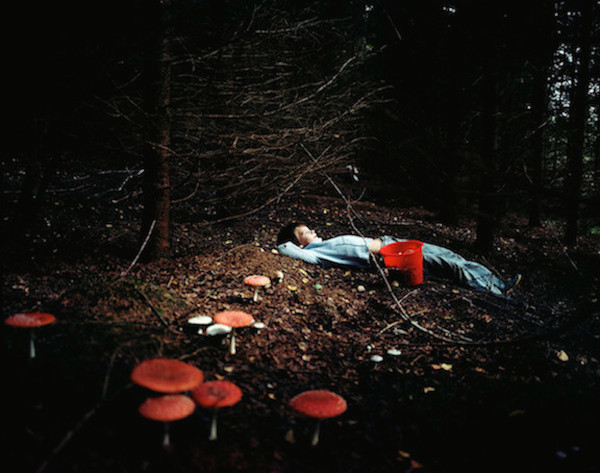
“Looking at my parents’ family albums, I would imagine their lives before me. I constructed memories I didn’t have, playing them over and over again. . . . My work addresses the idea of memory and ‘looking back’ through the creation of a narrative based on family history.” —Iveta Vaivode, about her essay “Somewhere on a Disappearing Path,” which won the 2014 CDS Documentary Essay Prize in Photography
What are some of your proudest achievements?
The first six winners of the CDS/Honickman First Book Prize in Photography; the seventh winner will be selected at the end of this year (see guidelines here; the deadline is September 15)
Working with all the photographers and judges, and our publishing partner, Duke University Press, on the CDS/Honickman First Book Prize in Photography books alongside Lynne Honickman of the Honickman Foundation has been such an honor and has, yeah, made me quite proud.
There are so few ways that photographers can publish a first book, a mass-distributed book at that, without putting themselves in hock. The First Book Prize makes it possible to get paid to finish a book-length project working with an editor, a designer like Yolanda Cuomo, a production team, and a marketing staff.
This year’s competition has two amazing judges—Sandra S. Phillips of SFMOMA is the final judge, and Joshua Chuang of the Center for Creative Photography is the panel judge for the committee that selects the finalists.
“The technology of the book is ancient and still has advantages—we can re-see the pictures at will, we can pick up the book and sit comfortably with it, we can read it in a certain order, we can contemplate what an author has written of the pictures—that contribute to the reverberant meaning of the pictures. Picture books, books of photographs, are not being lost to the digital revolution; if anything they have become only more meaningful, more treasured.”—Sandra S. Phillips
One kind of staggering and incredibly poignant event that stands out from the past fifteen years is the day that Lynne and I spent with Robert Frank at his place in New York. Going through the finalists’ prints with him shoulder to shoulder made me think how strange and serendipitous life can be—how could it be possible that I would have a job that answered the curiosity of my 15 year old self in this way? It seemed to me that I’d kind of “made it” to have my life and occupation intersect so fully.
I’m still very happy about the work that I did at DoubleTake magazine as proofreader, managing editor, and then executive editor. These spreads are from the Winter 1999 issue.
What do you look for when attending a portfolio review?
I said this in an interview with the Fence, and I can’t really improve on it: “My approach to reviewing photography is to keep my mind open. I don’t know what’s going to happen—I’ve learned that whatever I think my preferences are fly out the window pretty fast when looking at people’s work. I’ll be looking at a series of photographs, and the way they fit together, convey a certain way of looking—I am simply drawn in. Both as photos and as an atmosphere, a sensibility.”
What is something unexpected that we don’t know about you?
I don’t know if it’s unexpected but it’s private; I have an bit of an obsession with photographing photographs in books with my cellphone, and then mixing them, mixtape style. Also incredibly keen on pickling and making sauces. The problem is that I’m not good at cooking the food that might be enhanced by pickles and sauces.
I also love lemons and mowing the grass.
And because it’s a Mixtape, what is your favorite band, song, and do you dance?
My favorite all-time band would have to be Yo La Tengo. My favorite song . . . uh, well, the songs that just popped into my head are “Unsatisfied” by the Replacements, “Blue Line Swinger” by Yo La Tengo, anything by Sparklehorse, “All Falls Down” by Kanye and Syleena Johnson, and “Started from the Bottom” by Drake.
I love to dance. Always and anywhere. Favorite all-time dance song, hands down, easy, is “Fight the Power (Part 1 and 2)” by the Isley Brothers.
And now I hand the headphones to Alexa so she can create her own Mixtape Mix:
From top left, to right, a down and dirty (and spotty) survey of photographs from CDS Books and by winners of the Lange-Taylor Prize and the First Book Prize in Photography over the last twelve-plus years:
Deborah Luster, Wendy Ewald, Tiana Markova-Gold, Bruce Jackson,
Larry Schwarm, Misty Keasler, Danny Wilcox Frazier,
Carolyn Drake, Ben Lowy, Vince Cianni, Roger LeMoyne,
Fitoshi Miyagi, Teru Kuwayama,
Jennette Williams, Alex Harris, Steven B. Smith
Jim Dow, Will Steacy, Anonymous from Colors of Confinement,
Don Weber, Peter Brown
Rob Amberg, Gerard H. Gaskin,
Jim Lommasson, Kitra Cahana
Peter van Agtmael, Paul Kwilecki,
Beatriz Wallace
Thank you Alexa, for all you do for photography and photographers….
Posts on Lenscratch may not be reproduced without the permission of the Lenscratch staff and the photographer.
Recommended
-
The Christy Karpinski MixtapeDecember 2nd, 2023
-
The Rotem Rozental MixtapeJanuary 27th, 2023
-
The Brian Taylor MixtapeJune 14th, 2019
-
The David Rosenberg MixtapeMay 3rd, 2019
-
The Jonathan Blaustein MixtapeJuly 20th, 2018

